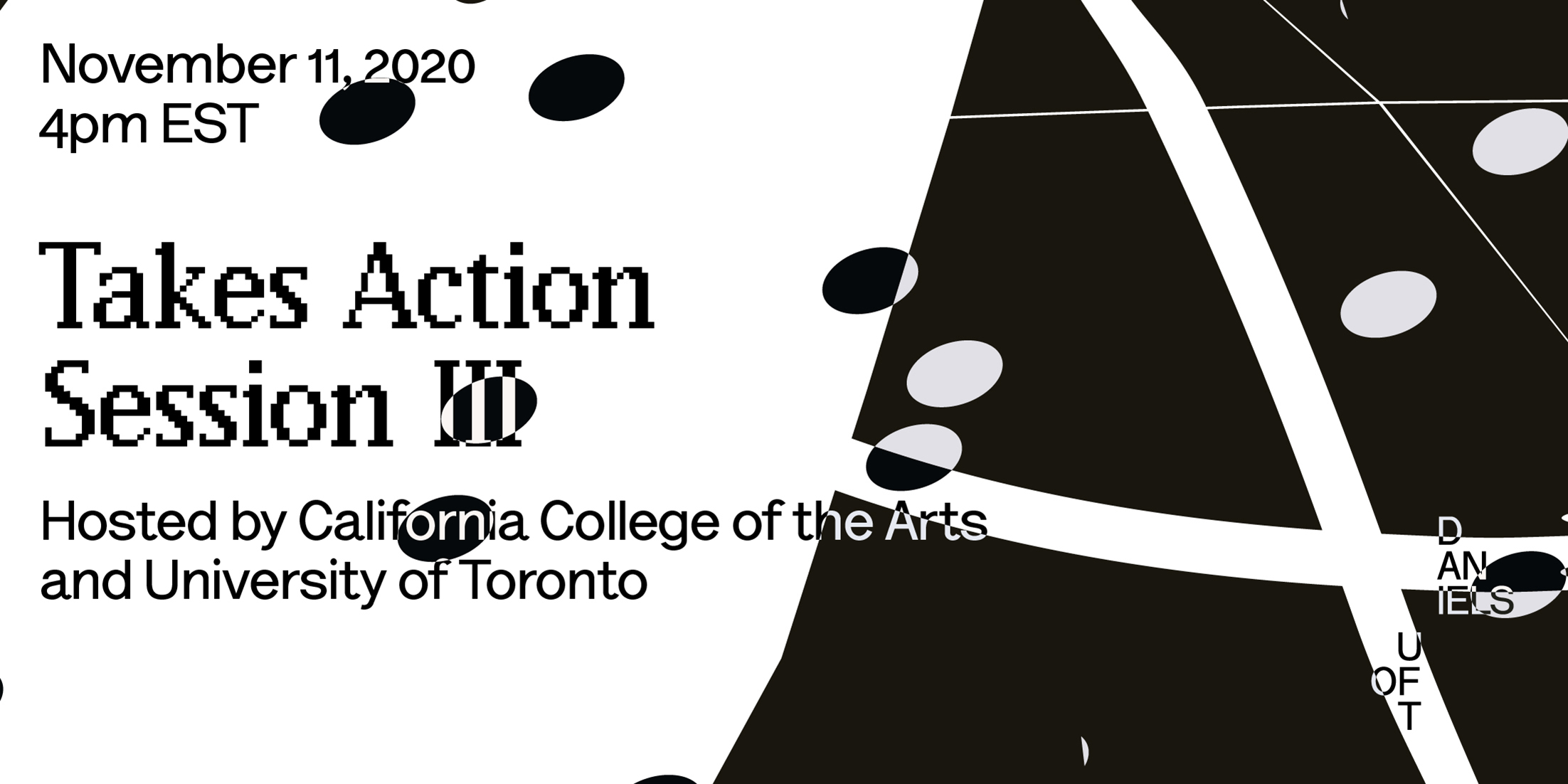
Takes Action – Session III
-
Jill Desimini (Harvard University)
Ersela Kripa & Stephen Mueller (Texas Tech University)
David Moon (Columbia University)
Lucía Jalón Oyarzun (EPFL)
Moderated by
Neeraj Bhatia (California College of the Arts)
Mason White (University of Toronto)
Hosted by California College of the Arts and the Daniels Faculty, University of Toronto
This is the final in a series of panel sessions launching the fourth volume of Bracket, titled Takes Action.
Bracket [Takes Action] collects essays and projects that question how actions can be designed, accommodated for, and encouraged through both creative practice and design citizenship. The book and conversation is situated at a critical point in history in which actions need to be re-conceptualized to relate to who we are, how we live, and how we communicate today. The role of design and the agency of the designer are at stake in facilitating or stifling action.
This session will focus on InAction and RetroAction as methods for operating and thinking. InAction is a way of acting by not-acting. From squatting and loitering to waiting lands, in particular contexts, inaction has proven to be an effective way to sidestep, undermine, or identify loopholes within a system. How might design engage socio-political change with the least means necessary? RetroAction includes projects and texts that center on the contemporary role of memory, memorials, and commemoration on our understanding of valuing and giving place to history. How do forms of action participate in the registration of memory and foster a sense of historical recollection?
Graphic by Chris Lee
About Bracket [Takes Action]
The rise of several divisive leaders within contemporary politics, has once again brought action to the foreground. As a new generation makes their voices heard, they are also grappling to find effective platforms for action through design. This is particularly important to consider at a moment when the authoritative systems—Governments and corporations—appear more divergent to the voices on the ground. At the same time, within an increasingly pluralistic society, what we collectively value is increasingly unclear, which presents a primary challenge on taking action. Bracket [Takes Action] is situated at a critical point in history where the who, what, where, and how of action need to be re-conceptualized to relate to who we are, how we live, and how we communicate today. The role of design and the agency of the designer are at stake in facilitating or stifling action.
Bracket [Takes Action] contains over 28 essays and 15 design projects that are structured into six sub-themes: ReAction, CounterAction, InterAction, FAction, InAction, and RetroAction. Our contention in this collection of texts and projects is that a democracy in deficit cannot be repaired without a deeper investigation in how actions can be designed, accommodated for, and encouraged. Equally, this is our call to action—it is time for design to take greater accountability for its actions in our contemporary socio-political spheres. Bracket [Takes Action] provokes spatial practice’s potential to incite and respond to action.
Editorial board for Takes Action includes: Pier Vittorio Aureli, Vishaan Chakrabarti, Belinda Tato, and Yoshiharu Tsukamoto.
Purchase here in Canada
Purchase here in United States



